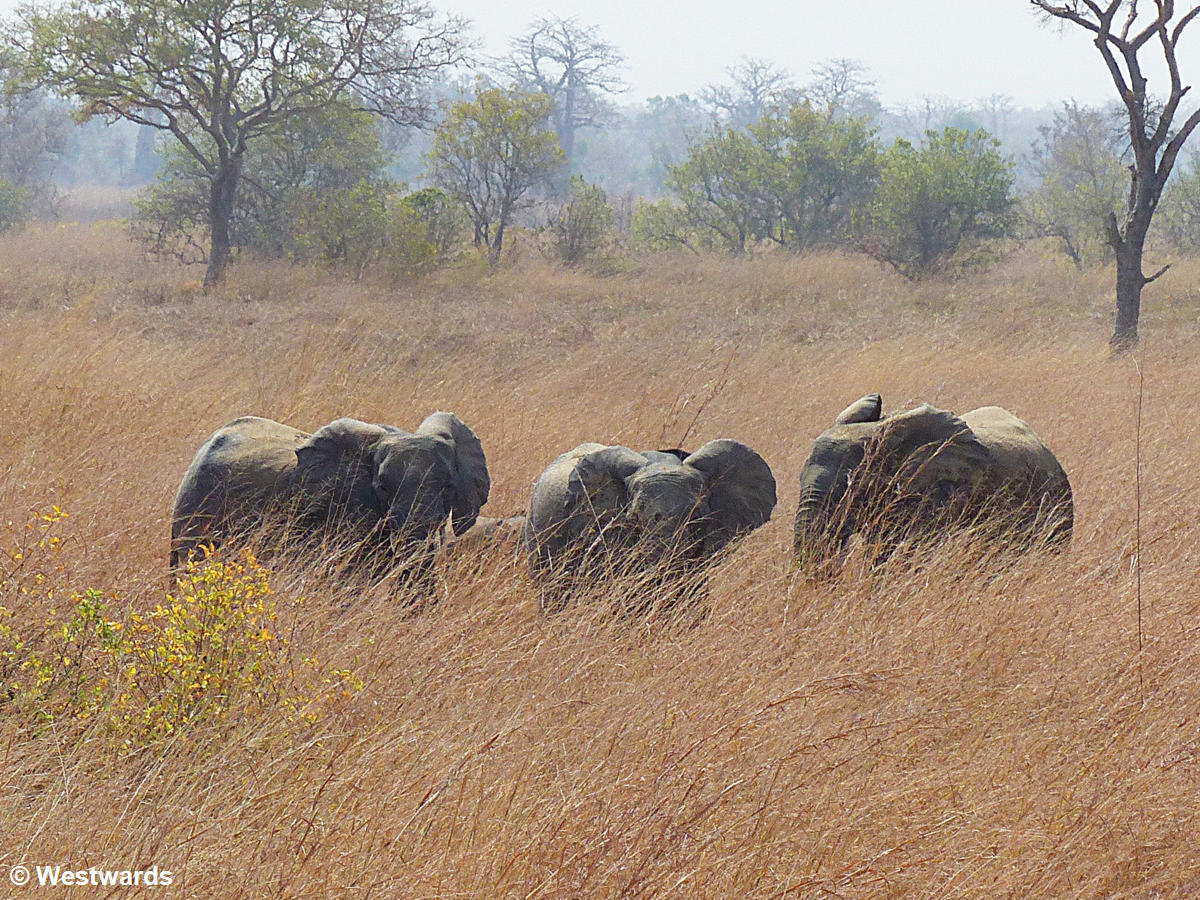
A small group of hippos is resting in the water on the opposite shore of the small lake in the Pendjari National Park in Benin, their nostrils flaring open, ears twitching occasionally, annoyed with insects. They seem to be standing very close to each other, like in a bathtub slightly too small for such a weighty group of bathing guests.
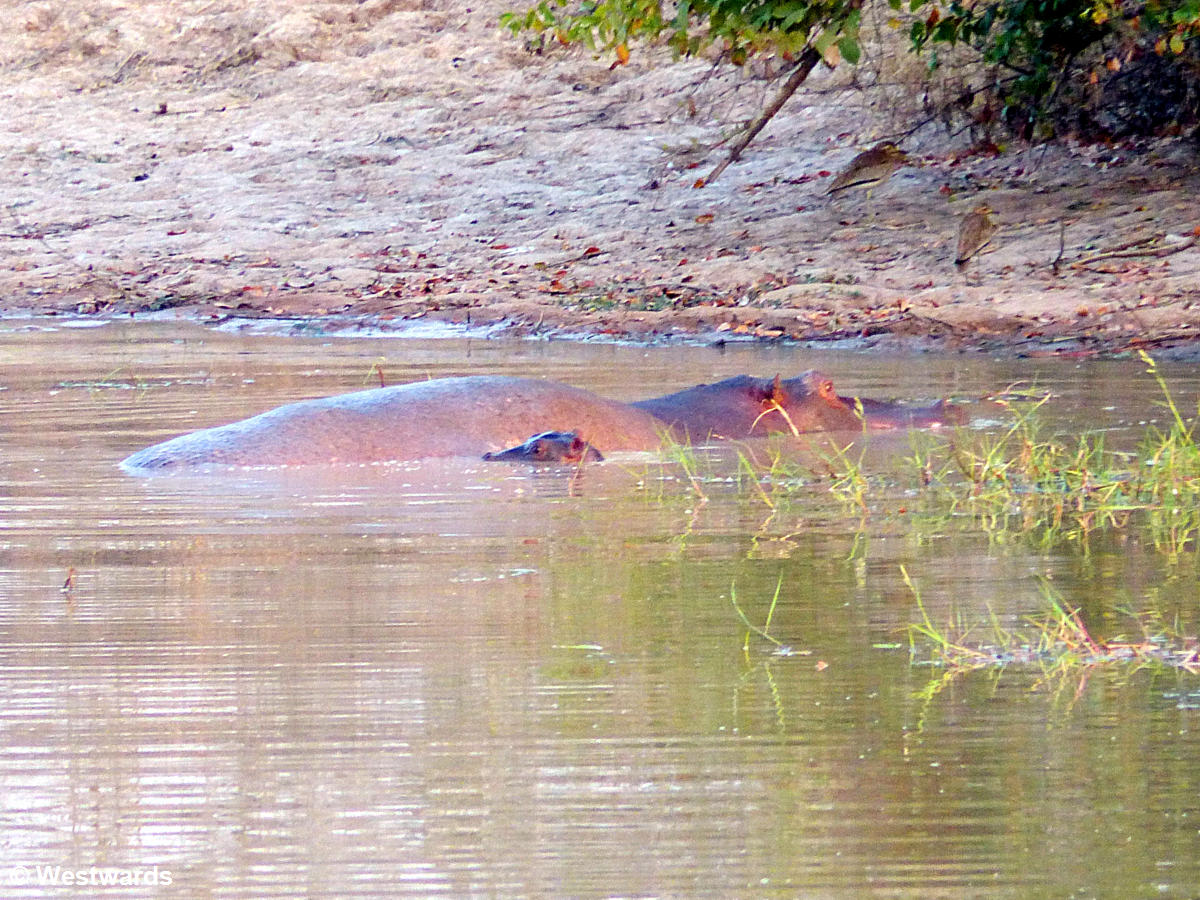
A bit nearer towards us, fast ripples indicate a more agile swimmer. A crocodile is moving past the hippo group. Indeed, now that we look closer, there are a few more of them in the water. A number of wading birds are standing in the shallow waters. They seem quite unimpressed, just like the guinea fowls on the opposite shore. An osprey is watching the lake silently, perched on the highest branch in the surrounding trees. Our viewing platform is rather open, not a concealed observation stand – but the animals don’t seem to mind.
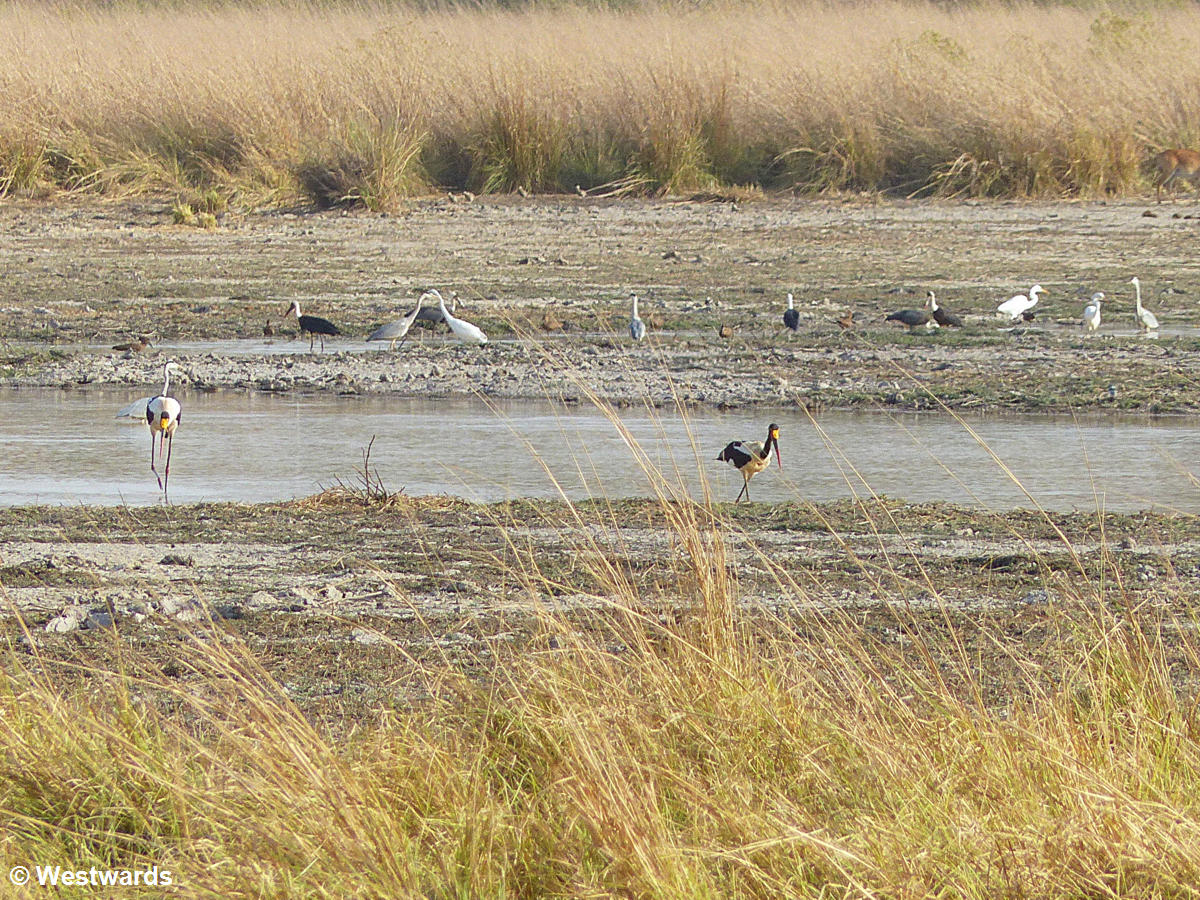
We are travelling in the core area of one of West Africa’s best and most well-known National Parks. Pendjari National Park, in Northern Benin along the border of Burkina Faso, covers an area of 2755 square kilometers. It is home to lions, leopards, and cheetahs, the largest population of elephants in West Africa, and numerous rare and threatened species. Together with two nearby National Parks of Niger and Burkina Faso it is part of the UNESCO World Heritage list as a World Natural Heritage site.
A baby hippo and some wart hogs
There’s a baby hippo next to one of the larger ones, and we would be content to linger for a while and watch the events at the lake. But Malick, our guide, is urging us to move on. After all, we started at 5 am from the small town of Tanguieta in order to get into the core area early. At this time the animals are still active before the midday heat.

From the roof of the tourist 4×4, we scan the dry Savannah landscape for animals. Most of the time, of course, Malick is the first to point somewhere in the distance. He spots Bushbuck gazelles, warthogs, buffaloes or the huge horse antelopes.
We see several groups of elephants, and although they stay in a distance in the high Savannah grass, we find their immense ears quite impressive. After all, the elephants we have seen so far on our travels have been Indian elephants, with smaller ears.
Lions and baby warthogs
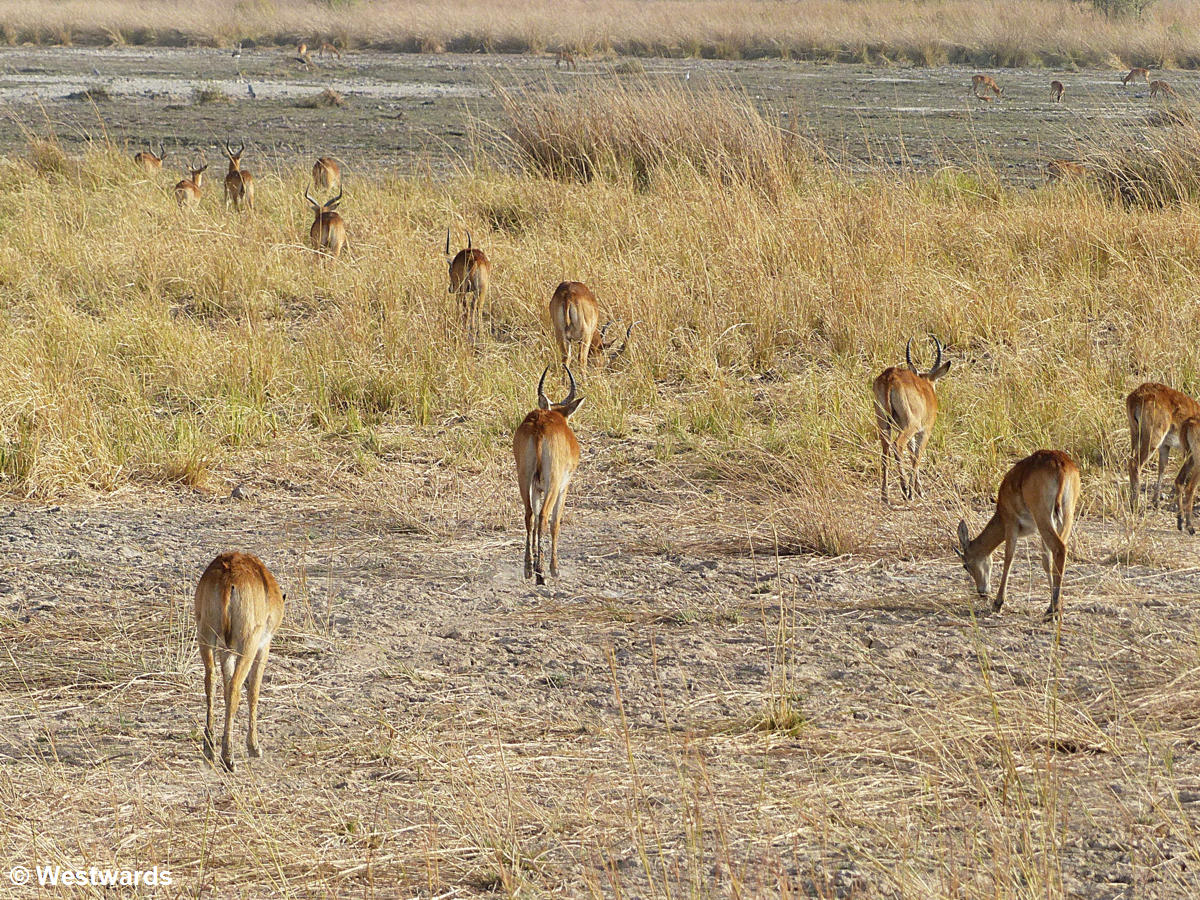
There are a lot of birds around, too, but the animals we see most are baboons and gazelles.
“The lions don’t like chasing gazelles, because they are very fast. And then they don’t even make a full meal – lions prefer the larger antelopes”.
This explains why there are so many gazelles although the lion population is quite large (around 70 animals). Even tourists stand a good chance to spot a lion during the visit (the leopards, by contrast are very rare). However, chances increase if you stay overnight inside the park and go on a safari in the core zone at dawn or dusk. We were at the park gate at 6.30, which is opening time.
From there it is was an hour’s drive through a buffer zone where hunting is allowed and animals are difficult to spot, to get into the core zone. Lions are thus the only animals we don’t spot on this visit which tourists could normally hope to see. We meet an Austrian family who had spent the night in the Park and who promptly relate their own lion sighting: With a baby warthog in his teeth! Like in a comic-book! Ok, nature can be mean to baby warthogs.
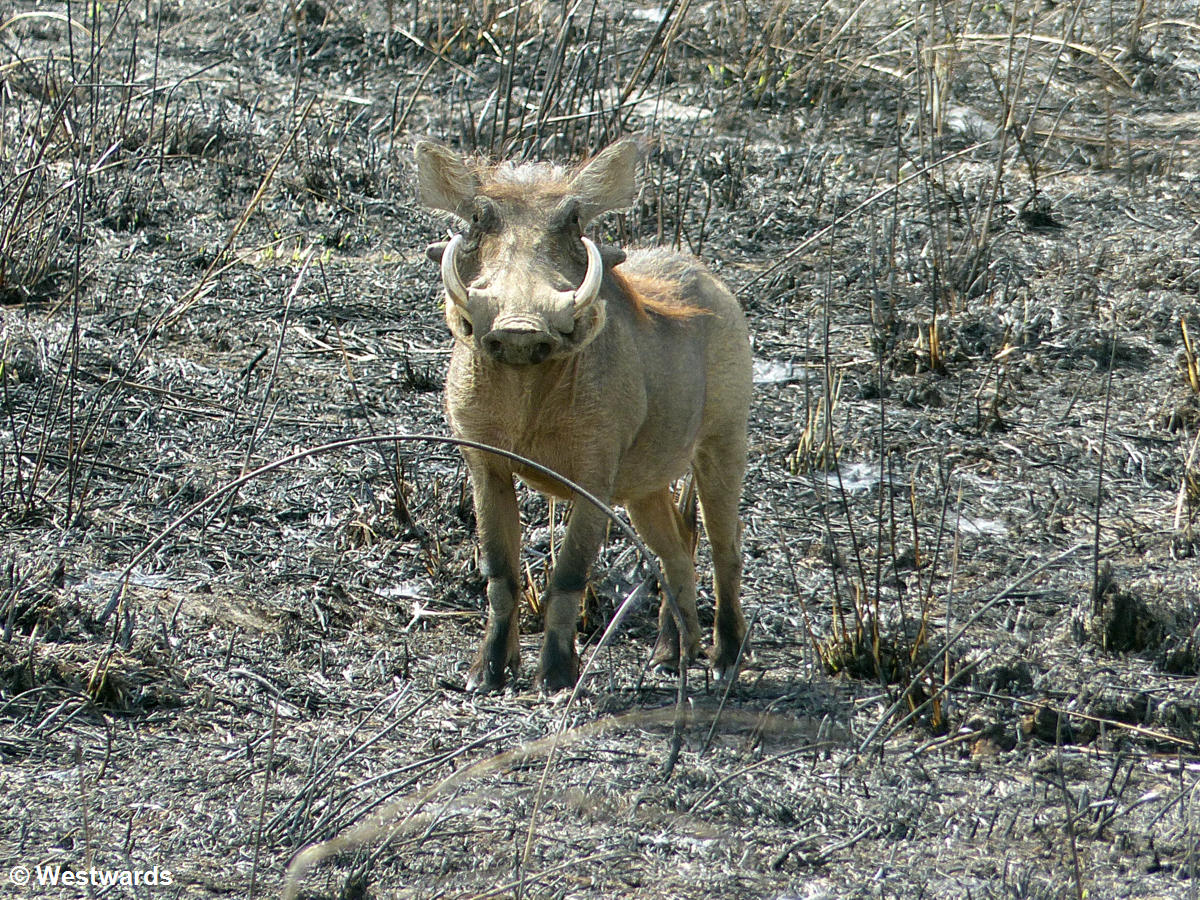
Day excursion or overnight trip to the Pendjari National Park?
We had considered a two-day excursion to the Pendjari Park in order to increase the chances of a lion sighting. But after some deliberation we decided against it. Apart from the time and expense for staying overnight, what made us reluctant was our experience from previous travels. We know by now that we tend to get bored easily even with the most exciting animals: “Oh, another crocodile?” “Oh, yes, look, some warthogs again – cute.”
And although we think it would be appropriate to appreciate these wild animals more, we are indeed quite content when the sun becomes hotter to leave the park. On the way back we stop at a nearby waterfall for a bit of rest and a splash in the lake.

Is Pendjari National Park worth travelling to?
We were surprised how many animals there were in the park and how easyily they could be spotted. The landscape was also pleasant. Although we were there during the tourist peak in the dry season, we only saw two other parties of visitors during the whole day. The Pendjari Park ist a very natural park with low tourist impact, and definitely worthwhile.
How to organise a trip to Pendjari National?
For a one-day excursion, like we did, it is best to arrange the visit from Tanguieta. Tanguieta is a small town in Northern Benin, at least a full day by bus from Cotonou. This was a rather natural stop on our way from Southern Benin to Burkina Faso.
We stayed in the Hotel Baobab, mentioned in all our travel guidebooks. From there it was quite easy to arrange for a qualified guide for the next day. Rates for the 4×4 and guide are fixed, apparently. Going from Tanguieta we were quoted 70,000 CFA from several sides, and this was not negotiable. If you want to spend several days, the trip can be arranged just as well from the larger town of Natitingou for slightly more. The park entrance fees, which have to be added to the car hire, are rather moderate. When we went it was 10,000 CFA per person / day plus 3000 CFA for the car/day.
We were not sponsored in any way for this trip to the Pendjari National Park. Naturally, we paid ourselves for the visit and all related costs. We organised the visit with a tour guide recommended by Baobab Hotel in Tanguieta.
Never miss a new post! Get notifications about new posts straight into your inbox!




klingt interessant, stressfrei und sehr natürlich ! 🙂
Ja, und Benin war überhaupt sehr stressfrei und leicht zu bereisen.
Love that you balanced time seeing animals with a splash beneath a waterfall! But what an amazing experience to see these animals in their natural environment instead of a zoo!
Dear Tami, yes the Pendjari National Park was an amazing low key safari trip. I guess compared with the big parks in East Africa it is not so exciting, but we enoyed it!
Lovely! You got a better view of the hippos than we did on our maiden safari. I would like to visit Benin. Next time l go home, I think it would be a good thing to visit neighboring countries since they are so close. I just don’t know if l can stand the bad roads 🙂
Yes, roads are bad in Benin, Togo and Burkina Faso. Are they any better in Nigeria, you think? We liked Benin most of the three countries – friendly people, good food and also enough infrastructure for some sightseeing!
You guys are taking all these exotic trips! It makes me really envious to see this beautiful national park in Africa. I always wanted to go on a safari, but didn’t fulfill my dream yet. You’ve got so beautiful pictures of the hipo and those elephants, but my favorite one is the baby warthog. Adorable!
Dear Anda, the Pendjari Park is a wonderful low-key park for a safari. It is not so well-known than the parks in East Africa but we had a good time!
Fascinating to read about the habits and circle of life for these animals. Especially to read about why there are so many gazelles, and that lions go after the antelopes due to pace and size. Must have been an amazing experience to see them in their natural setting.
Looking at hippos lazing in the water I always thought they were not that much to worry about. But the one time we came across them, we were warned to stay far back. I am glad your choice to visit Pendjari National Park as a day trip worked out. We have had great success with day game drives. Although one day I want to stay inside a part and get that sunrise and sunset experience.
Dear Linda, staying inside a park must be an experience too, for sure. As it is usually quite expensive to stay at a lodge, I would choose the park carefully.
How amazing to see the wild animals of West Africa in their habitats! Then took a deep on the way back. The info about lions and gazelles is interesting.
Dear Umiko, safaris in West Africa might be not as spectacular as in the east of the continent – but they are more relaxed and low-key.
I love the way you have written this post. Never seen Wart Hogs, so would love to see those. I agree, as a tourist, things can get too much. but as a native, they can be mundane too. However, the pleasure of wildlife is endless, I would love to plan a visit to this national par, considering its a low-impact zone.
Dear Ambica, I agree: If you are concerned with the impact of tourism in the national parks, West Africa is a better place for a safari than the big parks in Kenya and South Africa.
This is such a wonderful experience. It must have been exciting to see the baby animals. Thank you for sharing your experience. We’d love to visit too
I have never seen a wartlog. I love the pic you have managed to catch of it. Hippos would be fun to watch -especially the baby hippo. And yes, after a hot day, the waterfall is definitely inviting. Thanks for sharing a different part of the world with us.
Nice post on Pendjari national park, with an amazing capture of the savannah grasslands. Great to see how you captured the gazelles and warthogs and a glimpse of the relaxing waterfalls is soothing.